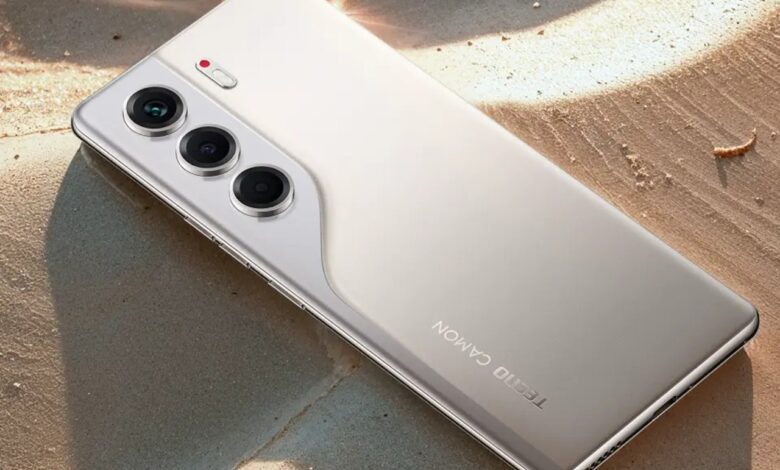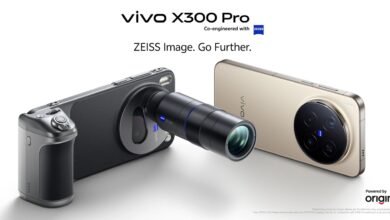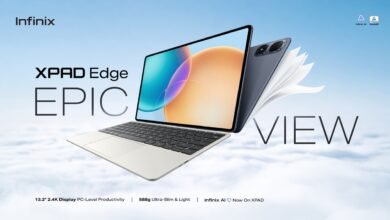
If you’ve walked into any phone shop in Nairobi, Kampala, or Addis Ababa lately, you’ve probably noticed Transsion brands are everywhere. From TECNO to Infinix to itel, the company has its fingerprints all over the sub-$200 segment, and now the numbers are backing up what’s been obvious on the ground for years.
According to the latest IDC Worldwide Quarterly Mobile Phone Tracker, Transsion isn’t just holding steady. It’s expanding fast, especially across North and East Africa. The company’s strong distribution network and affordable smartphones continue to make it the go-to brand for millions looking for value-packed devices without breaking the bank.
In Q3 2025, Transsion shipped 29.2 million smartphones globally, up from 25.7 million the same time last year. That’s a 13.6% jump, outpacing the overall market’s 2.6% growth. With that, it solidified its top 5 global spot, a feat that few outside China’s powerhouse brands have ever managed.
And really, it’s not hard to see why. In East Africa, Transsion’s formula feels almost perfectly tuned to local realities. Phones that prioritize battery life, AI camera tricks, dual SIM support, and most importantly, affordability. Whether it’s the selfie-obsessed Spark series or the long-lasting itel handsets, these are devices that meet people exactly where they are. Add in the company’s tight relationships with local distributors and aggressive retail presence and financing models, and you’ve got a brand that’s practically woven into the fabric of daily life here.
While Transsion was busy dominating African markets, the global smartphone market itself showed a modest but encouraging recovery. IDC reports that shipments hit 322.7 million units in Q3 2025, a 2.6% year-over-year rise, signaling a return to stability after years of supply chain chaos and cautious consumer spending.
Interestingly, this growth came from two very different ends of the spectrum. On one hand, Apple and Samsung drove a premium upgrade cycle with the former boasting its best-ever July quarter thanks to strong iPhone 17 sales, and the latter seeing its Galaxy Z Fold 7 and Flip 7 become the most successful foldables yet. Both brands managed to convince consumers that upgrading, even in a shaky economy, was a “no-brainer.”
On the other end, affordable AI-enabled smartphones like those from Transsion and Xiaomi did the heavy lifting in emerging markets. Xiaomi, in particular, continued its comeback story, consolidating gains in Europe and Latin America through its Redmi and Poco lines. Vivo, meanwhile, saw renewed traction in several developing regions, thanks to refreshed midrange phones with AI-powered imaging and aggressive online deals.
Here’s how the global leaderboard looked for Q3 2025, according to IDC’s preliminary numbers:
| Rank | Company | Shipments (Millions) | Market Share | YoY Growth |
|---|---|---|---|---|
| 1 | Samsung | 61.4 | 19.0% | +6.3% |
| 2 | Apple | 58.6 | 18.2% | +2.9% |
| 3 | Xiaomi | 43.5 | 13.5% | +1.8% |
| 4 | Transsion | 29.2 | 9.0% | +13.6% |
| 5 | Vivo | 28.8 | 8.9% | +6.9% |
| — | Others | 101.2 | 31.4% | -3.2% |
So yes, while the global headlines will focus on Apple’s record-breaking quarter and Samsung’s foldable momentum, Africa’s story is just as compelling. Transsion’s climb shows that innovation doesn’t always mean bending screens or cramming AI into every pixel. Sometimes it’s about understanding real-world needs, building trust in the channel, and keeping prices sane.
And if IDC’s optimism for the rest of 2025 holds true with demand for affordable, AI-powered devices expected to remain strong, East Africa’s smartphone boom is far from over. In fact, the next big thing might just come in a box labeled TECNO, Infinix, or itel.







